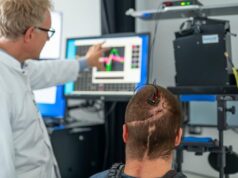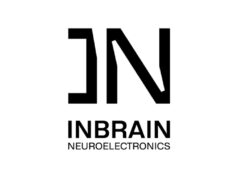
Synchron has announced the world’s first-ever use of Apple Vision Pro by one of the patients implanted with the Synchron brain-computer interface (BCI).
Mark, a 64-year-old man with amyotrophic lateral sclerosis (ALS), successfully used his direct thoughts to control the cursor on the Apple Vision Pro as he played Solitaire, watched Apple TV and sent text messages using the Synchron BCI hands-free. Mark is otherwise unable to use the Apple Vision Pro due to the loss of function of his upper limbs, as the system requires hand gestures to make item selections.
“This is pretty cool, I’ve been wanting to try this for a while now,” Mark said in reaction to using his BCI to watch a video on the Vision Pro. “It’s like watching it in the theatre—it really comes to life. Using this type of enhanced reality is so impactful and I can imagine it would be for others in my position, or others who have lost the ability to engage in their day-to-day life. It can transport you to places you never thought you’d see or experience again.”
Synchron’s new BCI integration with Apple Vision Pro allows, for the first time, users who have lost mobility of their hands and voice to engage with the device. The BCI system is designed to be simple to use and easy to learn. This integration reflects Synchron’s commitment to patient-first innovation in neurotechnology, as per a press release from the company.
“BCI is a platform to reconnect people with injury or disease back to the fast-moving consumer technology landscape. Vision Pro is a powerful system, but it relies on the use of hand gestures to exert control over the UI [user interface]. We are sending control signals directly from the brain to replace the need for hand gestures,” said Tom Oxley, chief executive officer and founder, Synchron, “We are moving towards a new Bluetooth standard for human computer interactions that don’t require touch or speech. This is a critical unmet need for millions of people with paralysis.”
The Synchron BCI is implanted in the blood vessel on the surface of the brain’s motor cortex, via the jugular vein, through a minimally invasive endovascular procedure. Once implanted, it is designed to detect and wirelessly transmit motor intent out of the brain, intended to restore the capability for severely paralysed people to control personal devices with hands-free point-and-click.










